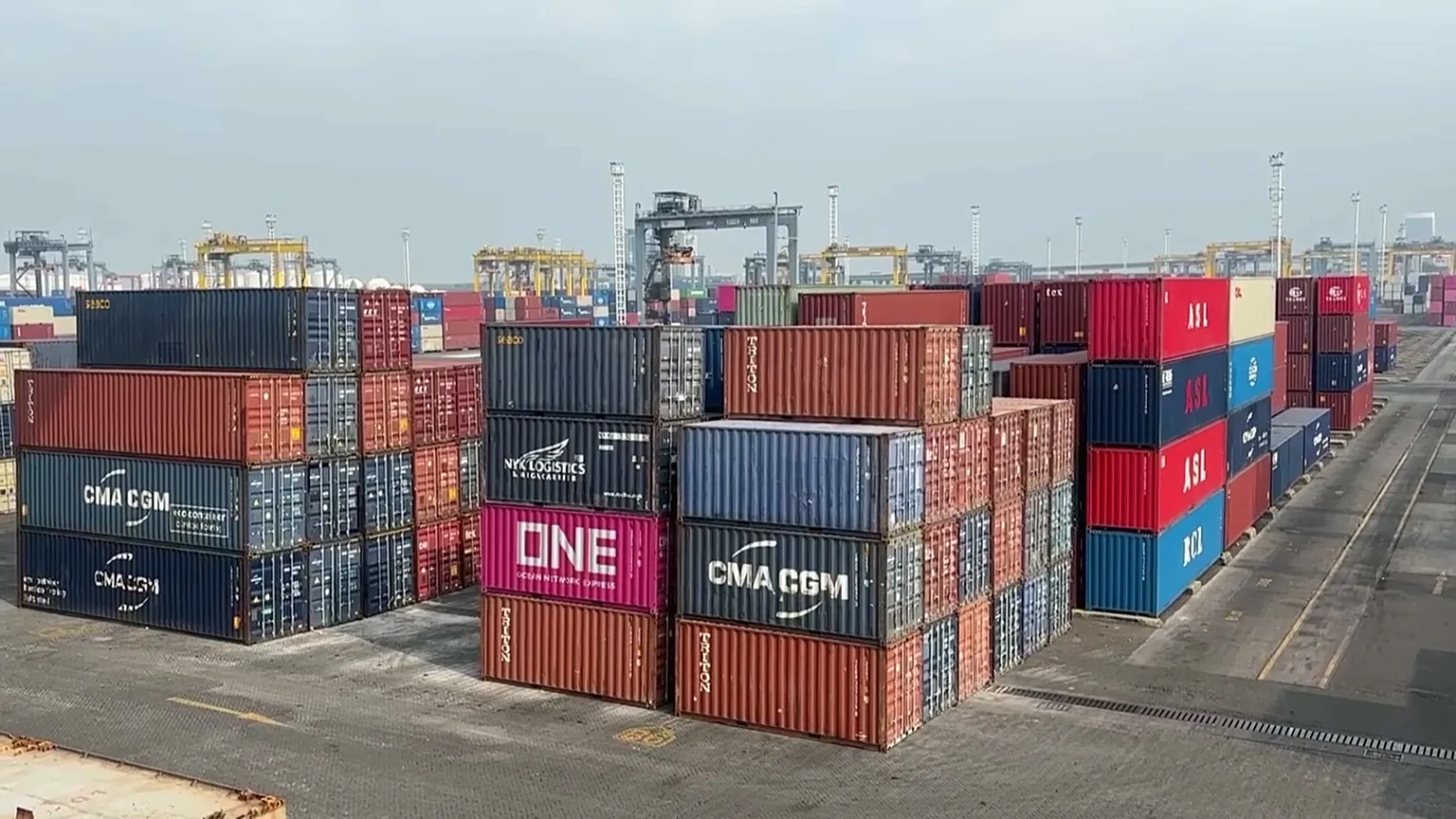Introduction: A World Divided by Tariffs
Picture this: you’re at the grocery store, eyeing a shiny new gadget, but the price tag makes your jaw drop. Why? Tariffs. These seemingly small taxes on imports have sparked a global economic storm, reshaping how nations trade, businesses operate, and consumers spend. The recent trade wars, particularly between the United States and China, have sent shockwaves through markets, supply chains, and livelihoods worldwide. In this article, we’ll unravel how these trade conflicts have weakened the global economy, explore their far-reaching consequences, and offer insights into navigating this complex landscape. Whether you’re a policymaker, a business owner, or just curious about the world’s economic pulse, this deep dive is for you.
What Is a Trade War, and Why Does It Matter?
Defining the Economic Battlefield
A trade war erupts when countries slap tariffs, quotas, or other barriers on each other’s goods, often in retaliation for perceived unfair practices. Think of it as an economic tug-of-war where nations aim to protect their industries but end up disrupting global harmony. These conflicts matter because they ripple beyond borders, affecting everything from your morning coffee’s price to the stability of entire economies.
The U.S.-China Trade War: A Modern Case Study
The U.S.-China trade war, ignited in 2018 and escalating into 2025, is a prime example. It began with U.S. tariffs on Chinese goods over concerns about intellectual property theft and trade imbalances. China retaliated, and the tit-for-tat spiral disrupted global markets. This conflict alone has reshaped supply chains, raised consumer prices, and sparked debates about the future of global trade.
The Economic Fallout: How Trade Wars Hurt the Global Economy
Shrinking Global GDP
Trade wars don’t just bruise the countries involved—they wound the global economy. The International Monetary Fund (IMF) estimated that universal 10% tariffs could shave 0.5% off global GDP by 2026, with the U.S. taking a 1% hit. Higher tariffs increase costs, reduce trade volumes, and slow economic growth, creating a ripple effect that dampens prosperity worldwide.
Disrupting Global Supply Chains
Modern supply chains are like intricate spider webs, connecting raw materials to finished products across borders. Trade wars snap these threads, causing delays, cost hikes, and production bottlenecks. For instance, U.S. tariffs on Chinese electronics components forced companies to scramble for alternatives, driving up costs and delaying product launches.
Case Study: The Tech Industry’s Struggle
The tech sector, heavily reliant on Chinese manufacturing, has been hit hard. Tariffs on semiconductors and other components have disrupted production for companies like Apple and Dell. Some firms have shifted manufacturing to countries like Vietnam, but the transition is costly and slow, impacting global tech availability and prices.
Rising Consumer Prices
Ever wonder why your new TV costs more than expected? Tariffs are often to blame. They increase the cost of imported goods, and businesses pass these costs to consumers. In the U.S., tariffs on Chinese goods led to higher prices for electronics, clothing, and even groceries, squeezing household budgets. Goldman’s analysis shows U.S. consumers absorbed 22% of tariff costs through price hikes.
Table: Impact of Tariffs on Consumer Goods
| Product Category | Average Price Increase (%) | Key Affected Countries |
|---|---|---|
| Electronics | 5-10% | China, U.S. |
| Clothing | 3-8% | China, Bangladesh |
| Automotive Parts | 4-12% | Mexico, Canada |
Stifling Investment and Innovation
Trade wars create uncertainty, and businesses hate uncertainty. When tariffs loom, companies hesitate to invest in new projects or expand operations. This reluctance stifles innovation, as firms divert resources to navigate trade barriers instead of developing new products. The U.S.-China trade war, for example, has slowed R&D in tech sectors due to restricted access to Chinese markets.
Sectoral Impacts: Winners and Losers
Not all sectors are hit equally. Manufacturing often sees a temporary boost from tariffs, as domestic producers gain a price advantage. However, services and agriculture suffer. U.S. farmers, for instance, faced retaliatory tariffs from China, losing export markets and requiring government bailouts. The net result? Overall employment in the U.S. dropped by 1.1% by 2028 due to these shifts.
Pros and Cons of Trade Wars
Pros:
- Protects domestic industries from foreign competition.
- Can boost local manufacturing jobs temporarily.
- May pressure trading partners into fairer agreements.
Cons:
- Raises consumer prices, reducing purchasing power.
- Disrupts global supply chains, causing inefficiencies.
- Leads to job losses in non-protected sectors like agriculture and services.
Regional Impacts: A Global Perspective
The U.S.: A Pyrrhic Victory
The U.S. saw a temporary surge in manufacturing jobs due to tariffs, but at a cost. Real wages fell by 1.4% by 2028, and GDP dropped by about 1%. States like California and Texas, heavily reliant on trade with China and Mexico, faced real income losses exceeding 3%. Meanwhile, states like Nebraska saw modest gains from import-competing agriculture.
China: Adapting Under Pressure
China, a primary target of U.S. tariffs, faced a 0.5% real income loss by 2028. However, it adapted by diversifying trade partners and boosting domestic markets. Still, the tech sector, particularly semiconductors, struggled under U.S. export controls, highlighting China’s reliance on Western technology.
Other Nations: Collateral Damage
Countries like Canada, Mexico, and Ireland, heavily tied to U.S. trade, suffered significant losses—Canada saw a 2% drop in real income, Mexico 2.7%, and Ireland 3%. Meanwhile, nations like the UK and Turkey benefited slightly from improved market access due to lower U.S. tariffs on their goods.
Comparison: Economic Impact Across Countries (2028)
| Country | Real Income Change (%) | Key Affected Sectors |
|---|---|---|
| U.S. | -1% | Services, Agriculture |
| China | -0.5% | Technology, Manufacturing |
| Canada | -2% | Automotive, Energy |
| Mexico | -2.7% | Manufacturing, Agriculture |
| Ireland | -3% | Technology, Pharmaceuticals |
The Social and Geopolitical Ripple Effects
Straining International Relations
Trade wars aren’t just about economics—they’re diplomatic dynamite. Tariffs erode trust between nations, weakening multilateral institutions like the World Trade Organization (WTO). The U.S.-China trade war, for instance, has fueled tensions over technology and national security, complicating global cooperation on issues like climate change.
Impact on Emerging Economies
Low- and middle-income countries often bear the brunt of trade wars. Disrupted supply chains and reduced global demand hit export-dependent nations like Vietnam and Bangladesh hard. These economies struggle to diversify trade partners quickly, leading to job losses and economic instability.
A Personal Story: The Farmer’s Plight
I once met a soybean farmer in Iowa who exported 60% of his crop to China. When retaliatory tariffs hit, his market vanished overnight. He relied on government subsidies to survive, but the uncertainty left him sleepless. His story mirrors thousands of others, showing how trade wars touch real lives, not just spreadsheets.
Navigating the Trade War Landscape: Tools and Strategies
For Businesses: Adapting to Change
Businesses can weather trade wars by diversifying supply chains, exploring new markets, and investing in automation to cut costs. Tools like TradeMap and ImportGenius help firms analyze trade flows and identify alternative suppliers. For example, shifting sourcing to Southeast Asia has helped some U.S. firms bypass Chinese tariffs.
Best Tools for Businesses to Navigate Trade Wars
- TradeMap: Offers detailed trade data to identify new markets and suppliers.
- ImportGenius: Tracks global shipping data to monitor supply chain shifts.
- Bloomberg Terminal: Provides real-time market insights for strategic planning.
For Policymakers: Balancing Protection and Cooperation
Policymakers must tread carefully. Moderate tariffs paired with domestic investment can minimize harm, but indiscriminate tariffs wreak havoc. Strengthening trade agreements and investing in workforce retraining can mitigate job losses in vulnerable sectors like agriculture.
For Consumers: Smart Shopping in a Tariff World
Consumers can offset price hikes by seeking domestic alternatives or buying in bulk before tariffs hit. Apps like Honey or CamelCamelCamel track price trends, helping you snag deals before costs rise. Staying informed via platforms like The Wall Street Journal or Bloomberg keeps you ahead of tariff-driven price shifts.
People Also Ask (PAA) Section
What Are the Main Causes of Trade Wars?
Trade wars stem from perceived unfair trade practices, like subsidies or dumping, and strategic goals like protecting national security. Economic imbalances, such as trade deficits, often spark conflicts, as seen in the U.S.-China trade war over intellectual property. Political motivations, like rallying domestic support, also play a role.
How Do Trade Wars Affect Small Businesses?
Small businesses face higher input costs and disrupted supply chains, squeezing profit margins. Unlike large corporations, they lack the resources to pivot quickly to new suppliers or markets. However, some benefit from domestic demand as consumers shift away from pricier imports.
Can Trade Wars Lead to a Global Recession?
Yes, trade wars can trigger recessions by reducing trade volumes, stifling investment, and eroding consumer confidence. The IMF warns that widespread tariffs could cut global GDP significantly, with the U.S. economy shrinking 0.5% in Q1 2025, signaling recession risks.
What Are the Long-Term Effects of Trade Wars?
Long-term effects include fractured trade alliances, slower global growth, and shifts in economic power. Supply chains may permanently relocate, as seen with tech firms moving to Vietnam. Geopolitical tensions also rise, complicating global cooperation.
FAQ Section
How Do Tariffs Impact Everyday Consumers?
Tariffs raise the cost of imported goods, leading to higher prices for items like electronics and clothing. U.S. consumers bore 22% of tariff costs through price increases, with some goods seeing 5-12% hikes. Shopping smart and seeking local alternatives can help mitigate the impact.
Are Trade Wars Ever Beneficial?
In some cases, trade wars protect domestic industries and jobs, as seen with U.S. manufacturing gains. However, these benefits are often short-lived, outweighed by higher prices, job losses in other sectors, and global economic slowdown. The net effect is usually negative.
How Can Businesses Prepare for Trade Wars?
Businesses should diversify suppliers, explore new markets, and use trade analytics tools like TradeMap. Investing in automation and local sourcing can reduce reliance on tariff-hit imports. Staying agile and informed is key to thriving amid uncertainty.
What Role Does the WTO Play in Trade Wars?
The WTO aims to mediate trade disputes and enforce global trade rules. However, trade wars, like the U.S.-China conflict, often bypass WTO guidelines, weakening its authority. Strengthening multilateral cooperation is crucial to resolving such conflicts.
How Do Trade Wars Affect Global Trade Growth?
Trade wars reduce global trade growth by disrupting flows and raising costs. The World Trade Organization noted a drop from 3% growth in 2018 to 2.6% in 2019 due to U.S.-China tensions, with similar trends persisting into 2025.
Conclusion: A Call for Smarter Trade Strategies
Trade wars, like the ongoing U.S.-China saga, have undeniably weakened the global economy, from shrinking GDP to disrupting lives. They’re a reminder of how interconnected our world is—and how quickly tensions can unravel progress. By understanding their impacts, from higher prices to strained alliances, we can push for smarter policies that balance protection with cooperation. For businesses and consumers, adaptability is key—whether it’s diversifying supply chains or shopping strategically. Let’s learn from this economic chess game and aim for a future where trade lifts all boats, not sinks them.
Where to Learn More
- World Trade Organization: For global trade data and policies, visit wto.org.
- International Monetary Fund: Explore economic forecasts at imf.org.
- Bloomberg: Stay updated on trade news at bloomberg.com.



